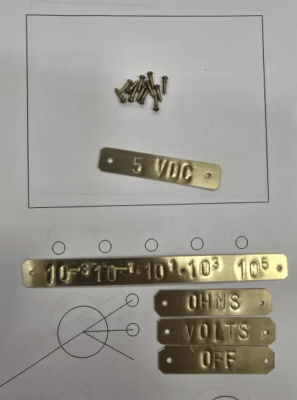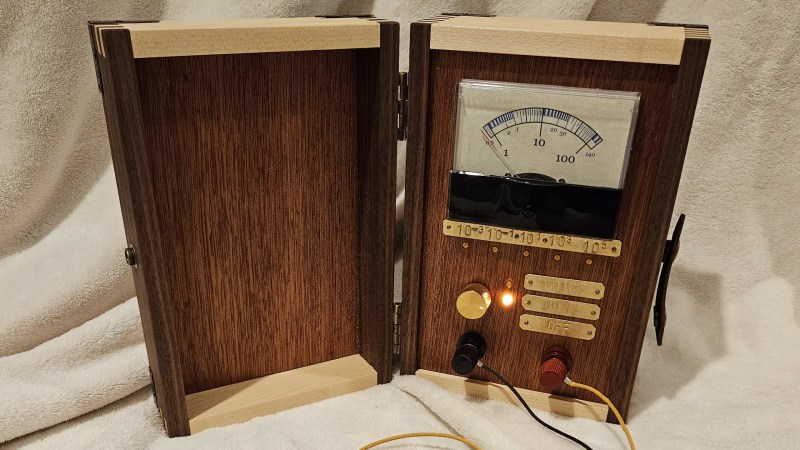[Agatha] sent us this stunning multimeter she built as a gift for her mom. Dubbed the Mohmmeter — a playful nod to its ohmmeter function and her mom — this project combines technical ingenuity with heartfelt craftsmanship.

At its core, a Raspberry Pi Pico microcontroller reads the selector knob, controls relays, and lights up LEDs on the front panel to show the meter’s active range. The Mohmmeter offers two main measurement modes, each with two sub-ranges for greater precision across a wide spectrum.
She also included circuitry protections against reverse polarity and over-voltage, ensuring durability. There was also a great deal of effort put into ensuring it was accurate, as the device was put though its paces using a calibrated meter as reference to ensure the final product was as useful as it was beautiful.
The enclosure is a work of art, crafted from colorful wooden panels meticulously jointed together. Stamped brass plates label the meter’s ranges and functions, adding a steampunk flair. This thoughtful design reflects her dedication to creating something truly special.
Want to build a meter for mom, but she’s more of the goth type? The blacked-out Hydameter might be more here style.















What a nice gift and what a fun project. Really cool!
Beautiful.
Nice!
And the leads can be kept safe inside the case, a vast improvement over the standard.
Actually, leads in the case is the standard for non-junk quality meters even today, although the case is more likely to be vinyl over cardboard. Wooden cases (though perhaps not the quality of OP’s project) were common well into the 1950’s, as they would be for any precision lab instrument which needed to be protected from its environment while in storage or transport.
Pretty much what early meters were once about. Wooden enclosure with a lid, analogue meter, and some rudimentary patching for ranges. Yes, I believe they even once used as detailed joinery. Nice work.
needs a jacob’s ladder!
Beautiful and functional, using current circuitry to give that retro look. Have you considered how much time and effort it took to make, and whether you’d consider making this objet d’art commercially?
Cool.
“and lights up LEDs on the front panel”
It’s unfortunate that LED’s are sooo very much more practical for this implementation than the classic “grain of wheat” bulbs (bulbs evidently requiring >=2x as much current as an LED).
Yeah I initially tried using actual incandescents, but for a variety of reasons it didn’t work out. However, I did try to replicate the incandescent look as much as possible: I tested several varieties of LED, and in the final version they are painted and under a colored lens, which does look very incandescent.
I was expecting it to directly measure Mhos.
Just to give due credit: while I designed, built, and programmed all the electronics, the beautiful wooden enclosure this project stands on is due to my collaborator Brent (see the linked writeup for details)!
Amazing project! Love seeing your work.